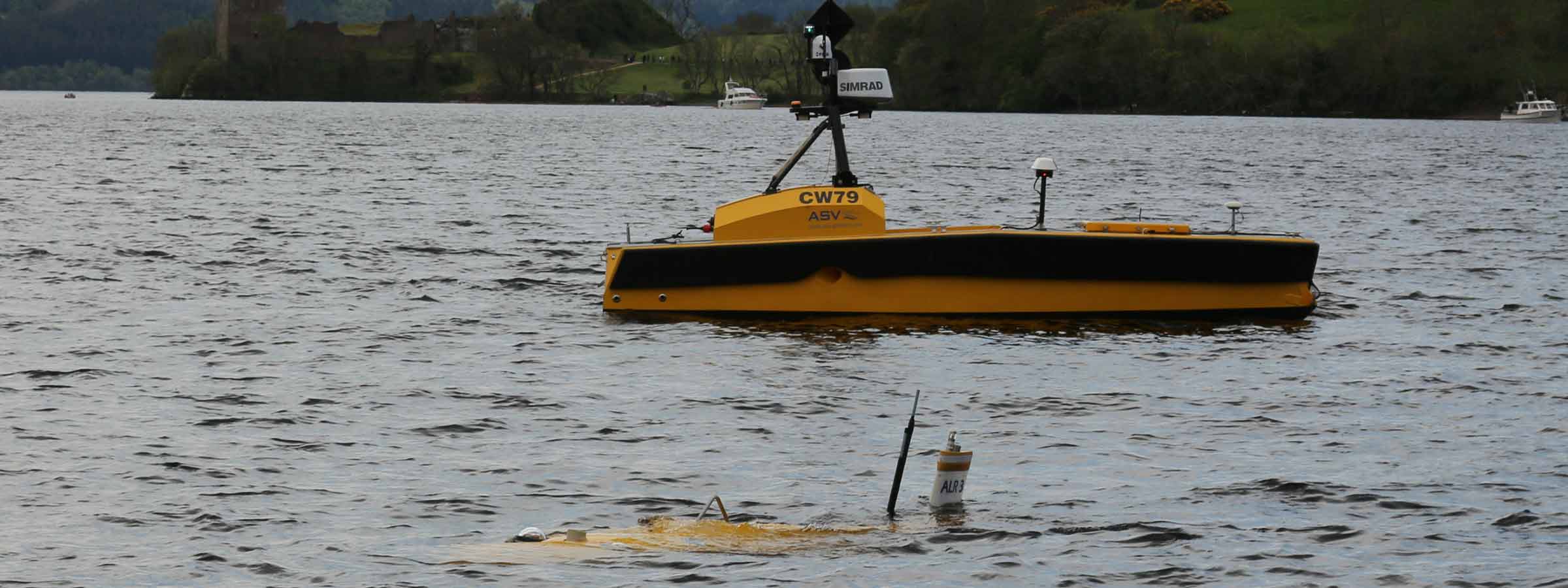Underwater positioning and communications technology leader Sonardyne International Ltd. has initiated a collaborative project to drive a major step change in ocean system autonomy for long-endurance autonomous underwater vehicles (AUVs).
The ambition of the Innovate UK-supported Precise Positioning for Persistent AUVs (P3AUV) project is to enable AUVs to operate at high levels of navigation performance with less surface support and for longer periods.
With partners L3 ASV and the National Oceanography Centre (NOC), Sonardyne will focus on longer-term navigational accuracy for AUVs in deep water, while reducing power requirements and increasing autonomy in marine operations.
The P3AUV project will involve trials using Sonardyne’s leading underwater positioning technology on the NOC’s Autosub Long Range (ALR) and L3 ASV’s C-Worker 7 autonomous surface vehicle (ASV). The project, which will include trials in Loch Ness next month, is due to run until late 2019.
The project will focus on three key areas. One will be increasing long-duration navigational accuracy by integrating low- and high-power Inertial Navigation System (INS) sensors.
[blockquote author=” Geraint West, Global Business Manager – Oceanographic, Sonardyne”]”The accuracy of low-power sensors degrades over time and AUVs consequently often have to surface to reinitialise with a GPS fix. However, by including high-performance, high-power navigation instruments, like our SPRINT INS, and integrating them with the low-power instruments to dramatically reduce power consumption, vehicle operators will get the best of both worlds, which will enable longer-duration independent deployments.”[/blockquote]
Second, we will improve positioning accuracy while underwater vehicles descend and ascend through the water column, through the integration of Doppler Velocity Log (DVL) current measurement capabilities and INS technologies with on board processing of data. “Our class-leading SPRINT-Nav instrument, which combines our SPRINT INS sensor, Syrinx DVL and a high-accuracy pressure sensor in a single housing, can measure water current as well as velocity relative to the seabed,” said West. “SPRINT-Nav will be able to use the water current velocity to reduce the dead reckoning mid-water navigation error, important to improving accuracy during both the dive and surfacing phases of an operation.”
The third area will be enabling ASV deployment of seafloor positioning transponders. “Autonomous low-cost deployment of seabed transponders by an ASV is attractive to the offshore energy industry for AUV operation, as well as a wide range of scenarios throughout the whole life of a field, including exploration,” added West. “Combining all of these capabilities will bring about a step change in AUV operations, providing a disruptive capability in the subsea monitoring and inspection space.”
“L3 ASV is excited by the promise of this technology, which provides autonomous systems with the capability to complete offshore work without the support of manned vessels,” said James Cowles, Commercial Technical Sales Manager, L3 ASV. “This project is a continuation of L3 ASV’s previous subsea positioning work, combining asset deployment and positioning.”
[blockquote author=” Aidan Thorn, Innovation Centre business manager”]”I am delighted that we continue to build on a successful partnership that was established around the Innovation UK Marine Autonomous Systems (MAS) round of funding in 2015, and continue to successfully bid for funding that enables novel deployment methods for MAS, which ultimately helps us to tackle the biggest scientific challenges. The strong and productive relationship between the NOC and our Innovation Centre partners is a proven example of UK industry and the public sector working together to generate mutually beneficial returns.”[/blockquote]
